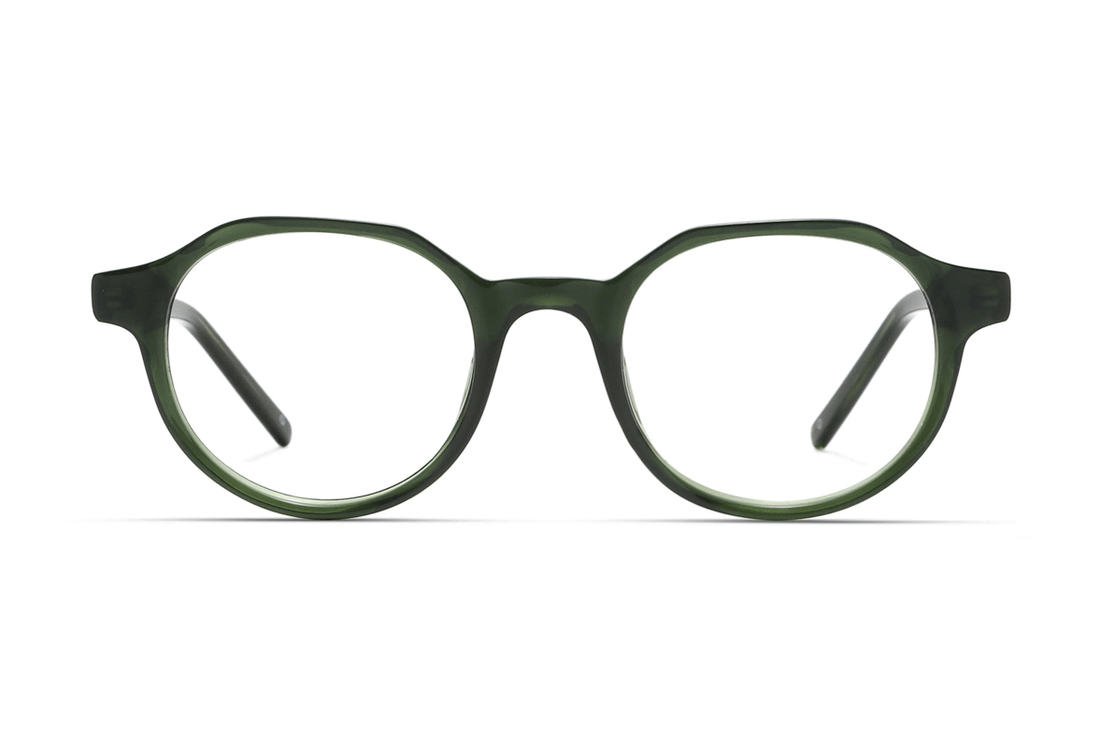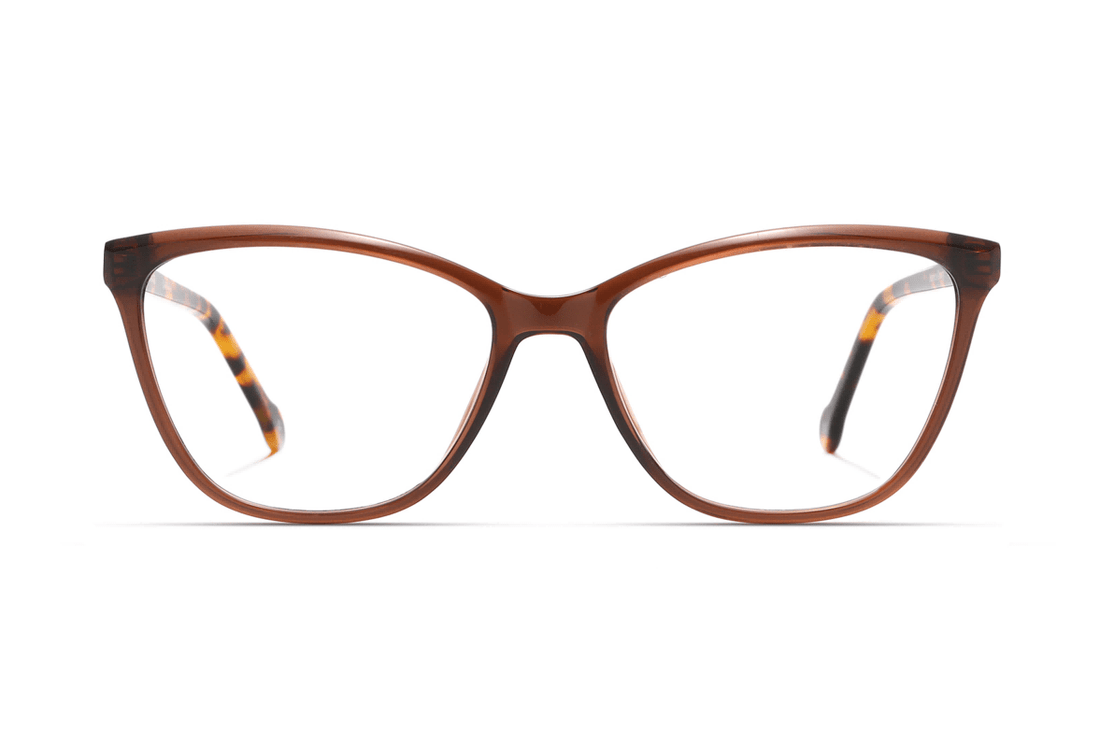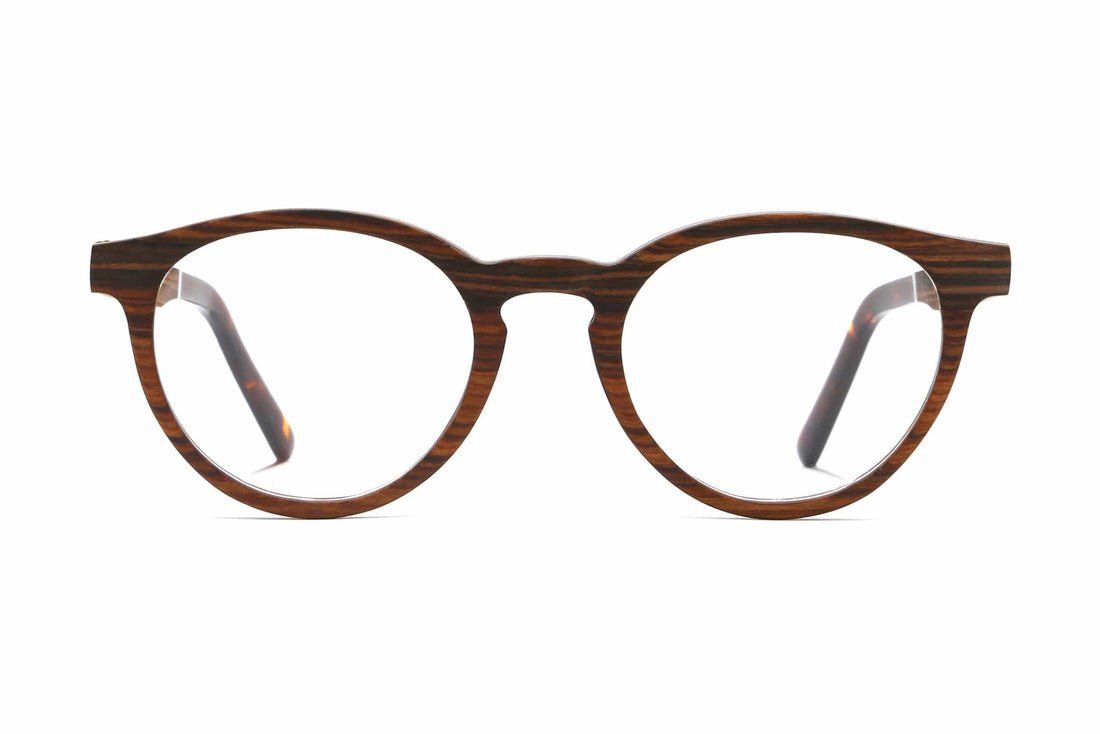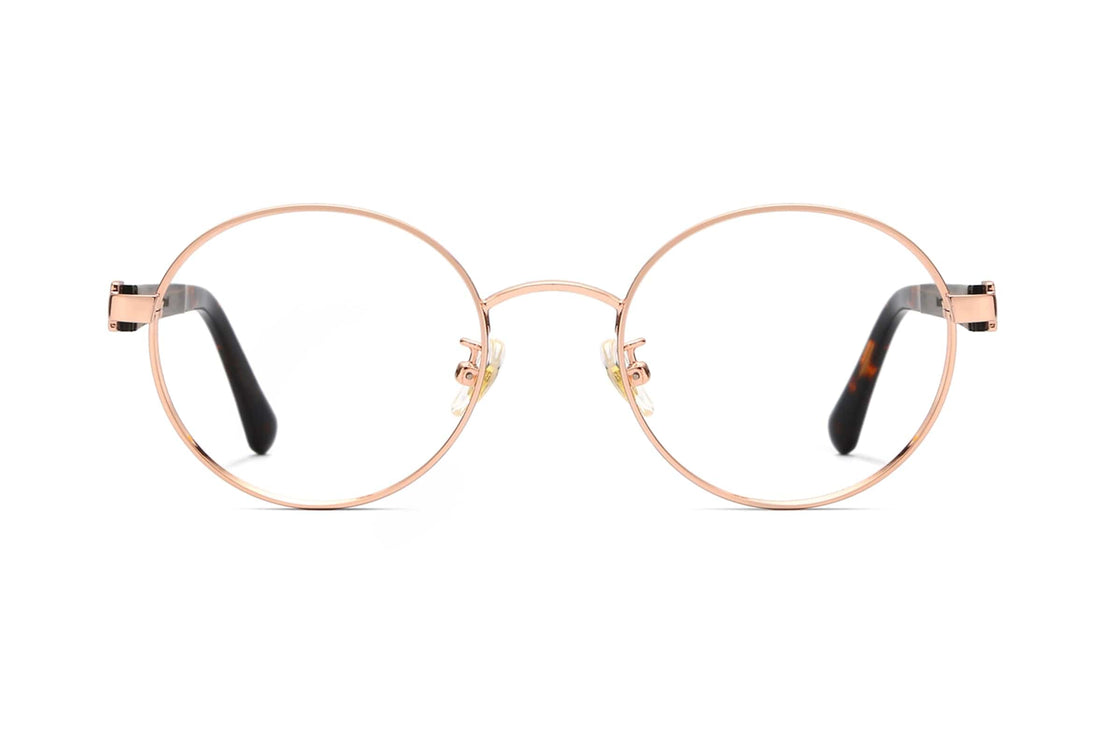
Nearsighted vs Farsighted: Understanding the Key Differences and Signs
Nearsighted vs Farsighted
10 min read • Posted on 9 April 2025
Understanding the difference between nearsighted and farsighted vision is essential when exploring common vision problems. Nearsightedness (myopia) and farsightedness (hyperopia) are the two most widespread refractive errors affecting millions of people worldwide.
Although they may seem similar at first glance, these eye conditions have distinct causes, symptoms, and treatment options. In this guide, we’ll break down nearsighted vs. farsighted vision, explain how each condition develops, and help you understand the best ways to manage and correct your eyesight.
Nearsightedness Definition and Causes
What is nearsightedness (myopia)?
Myopia describes a vision condition known as nearsightedness in which people see nearby objects clearly, but distant objects appear blurry. The condition emerges when light converges before reaching the retina rather than striking it precisely. Myopic vision varies from mild conditions causing normal vision with slight blurriness for distant objects to severe cases where people cannot see nearby objects.
Medical practitioners often detect myopia in children, but the condition typically intensifies throughout the person's life. Early recognition and treatment of vision problems help prevent severe deterioration of normal vision. Individuals with myopia use corrective lenses for daily tasks, whereas others depend on them only for driving or watching films.
Common causes of nearsightedness
Several contributing factors create nearsightedness. Strong genetic influences on the condition tend to cause nearsightedness in children with one or two nearsighted parents. Environmental influences cause myopia progression because they require people to perform extensive near-vision tasks, including reading and using devices.
The eye's elongated shape or cornea's excessive curvature misdirects light, resulting in improper focusing. Experts suggest that the time spent outdoors and the number of non-work tasks affect how much light focuses before someone develops myopia.
How it affects vision
Individuals with nearsightedness perceive distant objects as blurry and other objects as further away as indistinct. Their lack of clear distance vision disrupts fundamental activities such as driving, recognizing people from afar, and ensuring classroom visibility. They also develop eye strain and headaches when they try to perform these activities without using corrective methods.
Persons suffering from severe myopia face heightened risks of developing retinal detachment, glaucoma, and cataracts. Proper myopia management ensures clear vision while protecting long-term eye health.
Nearsightedness Symptoms and Diagnosis
Common symptoms of nearsightedness
People with myopia generally have trouble seeing distant objects clearly and tend to squint, leading to eye strain and headaches. Educational settings often challenge schoolchildren with blackboard reading difficulties, while adults commonly struggle to read distant road signs and view television screens.
These symptoms severely interfere with daily tasks while negatively impacting overall well-being. Extended periods of uncorrected nearsightedness increase discomfort and fatigue in activities that require clear-distance vision.
Corrective lenses (glasses and contact lenses)
The simplest and most prevalent methods to address nearsightedness involve wearing glasses and contact lenses. Individuals who need functional and fashionable vision correction solutions have access to diverse styles and designs of prescription eyeglasses. Contact lenses appeal to individuals who dislike glasses because they allow for an unrestricted field of vision.
All vision correction methods work by changing the way light enters the eye to achieve precise focus on the retina. Regular eye examinations ensure that prescriptions stay precise and enable patients to achieve optimal vision correction as light travels through their lenses.
Refractive surgery (LASIK, PRK)
LASIK and PRK are refractive surgical procedures that offer permanent solutions for correcting myopia. They modify the cornea's shape so that light can focus correctly on the front of the retina. The LASIK procedure involves making a corneal flap to reach the front of the retina through underlying tissue, which surgeons reshape. PRK surgery eliminates the cornea's top layer to shape the underlying tissue without creating a flap structure.
Both surgical approaches yield successful results by frequently lessening or eliminating the need for corrective lenses. However, an eye specialist must perform a detailed evaluation to determine a patient's suitability for these surgeries, as they are inappropriate for everyone.
Tips for Managing Nearsightedness
Daily habits to protect vision
Successful nearsightedness management requires the development of good eye habits in early childhood. Regular screen breaks with distant viewing should follow the 20-20-20 rule while maintaining proper lighting for work activities.
A diet of vitamins A, C, and E, zinc, and omega-3 fatty acids will enhance eye performance and health due to their eye-promoting properties.
When to seek professional help
You need professional assistance if you regularly experience vision fluctuations, headaches, and difficulty viewing distant objects. Routine eye checkups help detect myopia early, which can be adequately managed through regular updates to your prescription glasses.
If you continue to have symptoms or your condition worsens while using corrective lenses, seek an eye specialist to discuss alternative treatment options, such as refractive surgery or specialized contact lenses.
Lifestyle changes that can help
Specific lifestyle changes enable myopia control while slowing its progression through outdoor vision activities minimized screen time, and other eye-health-promoting activities.
Eye health improves through distance viewing exercises combined with relaxation routines, which minimize nearsightedness strain. Healthy living and a wellness focus also support eye health and enhance vision quality.
Farsightedness Definition and Causes
What is farsightedness (hyperopia)?
Farsightedness, or hyperopia, is a vision disorder that forces people to notice faraway objects more obviously than near objects. Light penetrating the eye concentrates behind the retina, leading to this vision problem. The intensity of hyperopia varies from person to person; some people see distant objects clearly, but others struggle with both correct nearsightedness and far vision.
Hyperopia typically exists from birth, but medical professionals commonly identify it in children. As children grow, their eyes undergo changes that help reduce mild hyperopia over time. As people age, their hyperopia becomes more visible, mainly when they engage in activities that require near-vision focus, like reading books or using smartphones.
Common causes of farsightedness
Numerous contributing factors cause farsightedness. Children are more likely to develop farsightedness when one or both of their parents show this eye condition. Extended close-up work activities can impact the severity of hyperopia but have a lesser effect on myopia.
An eye with a shorter eyeball or reduced corneal curvature fails to focus light correctly. Structural abnormalities inside the eye are the primary cause of hyperopia. Vision correction ability decreases gradually as people age, while their hyperopia remains consistent throughout their lifetime.
How it affects vision
Individuals with farsightedness see blurry images when looking at close objects. This condition makes it difficult to accomplish daily tasks such as reading books and documents and working on computers. Performing tasks without vision correction leads to difficulty focusing power, which causes eye strain and headaches.
Severe hyperopia develops when vision in near and far distances becomes disrupted, making tasks difficult. Vision clarity depends on regular corrections and management, directly affecting people’s quality of life.
Farsightedness Symptoms and Diagnosis
Common symptoms of farsightedness
Extended close-up work causes people with hyperopia to see nearby and other objects farther and more unclearly. It also induces eye strain, headaches, and fatigue. People extend reading materials to arm's length because it helps them focus properly and achieve better visual clarity.
People with hyperopia experience symptoms that interfere with their normal daily activities and overall physical health. People who do not correct their vision appropriately experience increased eye discomfort and fatigue when performing prolonged close work.
How farsightedness is diagnosed
A thorough eye test by an optometrist or an ophthalmologist identifies where both nearsightedness and farsightedness occur most. A standard eye examination includes assessments of visual acuity, refraction tests, and an evaluation of eye health. The tests determine how severe hyperopia is and help find the proper correction methods.
Earlier detection is essential for adequately curing hyperopia. Routine eye exams allow doctors to observe vision development and address visual problems in young patients.
Importance of regular eye exams
Eye exams are important in supporting healthful vision by enabling early detection of vision problems. Professional evaluations during eye exams allow us to identify farsightedness and other potentially serious eye problems and conditions that may go undiagnosed.
Patients with hyperopia need regular eye examinations to keep their lens prescriptions precise and ensure their vision remains appropriately corrected. Early treatment can prevent the eye strain and discomfort that result from untreated hyperopia.
Farsightedness Treatment Options
Corrective lenses (glasses and contact lenses)
Farsightedness correction primarily uses prescription glasses and contact lenses, which offer straightforward treatment options. Prescription glasses serve both practical needs and fashion desires by providing various styles and design options. However, individuals who decide against wearing glasses will gain improved vision through contact lenses, which deliver a natural experience.
Corrective lenses work by modifying light entry into the eye to ensure proper focus on the retina. Patients must undergo routine eye tests to update their vision prescriptions and ensure their lenses provide optimal vision correction.
Refractive surgery (LASIK, PRK)
The cornea undergoes permanent reshaping during LASIK and PRK surgery, which corrects hyperopia. These eye surgery treatments adjust the cornea, directing light rays to concentrate precisely on the retina. LASIK surgery involves forming a corneal flap, which surgeons then reshape, while PRK surgery involves scraping away the cornea's surface before reshaping the underlying tissue without creating any flap.
Most patients who undergo these procedures enjoy high success rates, which enable them to cease wearing corrective lenses. However, a complete examination by an eye specialist to determine eye doctor and surgical eligibility limits the applicability of these surgeries for every patient.
Nearsighted vs. Farsighted Diagnostic Differences
Different methods for diagnosing each condition
Diagnosing nearsightedness and farsightedness employs similar methods, but the same eye is examined for different visual parameters. An optometrist or ophthalmologist performs comprehensive eye exams to diagnose both conditions.
Role of eye exams in proper diagnosis
Professional eye examinations detect early vision changes, enabling immediate intervention and management. They also reveal additional eye health issues that might otherwise go undetected.
Children and teenagers require regular eye exams because their eyes continue to develop during this period. Detecting refractive errors early helps avoid additional vision problems and promotes correct vision development. Routine eye exams in adults help adults maintain their best eye health while ensuring their corrective lenses stay current.
Nearsighted vs. Farsighted Treatment Differences
Varying treatment options for each condition
People with nearsightedness or farsightedness have different treatment options but share similar methods. Glasses and contact lenses are the predominant treatment solutions for both vision conditions. These lenses modify how light enters the eye to ensure it focuses accurately on the retina. Each person requires a distinct prescription that depends on their level of nearsightedness or farsightedness.
People with nearsightedness and farsightedness can choose refractive surgery such as LASIK and PRK as treatment alternatives. These surgical procedures modify the shape of the cornea to enhance light from focusing directly onto the retina. Orthokeratology uses specially designed contact lenses that people wear overnight to have light rays reshape their corneas temporarily through non-surgical means.
Effectiveness of treatments
The success of treatments for nearsightedness and farsightedness depends on the severity of the situation and how well the person reacts to treatment. Corrective lenses successfully provide clear vision for both conditions. Users must wear their lenses consistently and get regular prescription updates to achieve the best vision correction results.
Refractive surgery achieves high success rates, which leads to significant reduction or complete removal of the need for corrective lenses. Surgery is not appropriate for all patients and requires a specialist to perform a full evaluation. Orthokeratology provides clear vision during daytime hours without corrective lenses through the consistent use of overnight lenses.
Future advancements in treatment
The next generation of treatments for nearsightedness and farsightedness will likely incorporate novel surgical techniques, better lens designs, and cutting-edge technologies. Scientific teams persistently investigate methods to improve refractive surgery outcomes while developing alternative non-invasive treatment options.
As scientists deepen their knowledge of the genetic and environmental elements that lead to these conditions, they will create new preventive strategies and early treatment methods. These medical breakthroughs will enhance the quality of life for people with refractive errors while decreasing the most common symptoms and occurrence of vision-related issues.
Early Detection and Treatment
Signs that indicate vision problems
Multiple indicators show vision problems that need professional evaluation. Symptoms include trouble focusing on distant and nearby objects, regular squinting, frequent headaches, and eye strain. These symptoms may indicate more profound eye disorders requiring immediate medical evaluation and treatment.
Benefits of early detection
Detecting vision problems early leads to enhanced treatment options and improved results. Timely correction through glasses or contact lenses after early detection of nearsightedness, farsightedness, or astigmatism enhances your distance and quality of life. Vision loss and eye health preservation are possible by early detection of severe conditions such as glaucoma or macular degeneration.
Eye exams and prompt treatment help control diabetes and high blood pressure, which threaten vision health. Early action against eye problems helps prevent complications and maintain better eye health.
Preventative measures to reduce risk
Consistent eye examinations are crucial in identifying vision issues early and enabling prompt treatment. Good hygiene practices, such as washing hands before touching your eyes and cleaning contact lenses properly, help prevent eye infections while maintaining overall eye health. Implementing these preventive steps helps keep your vision throughout your lifetime.
Properly grasping the distinctions between nearsightedness and farsightedness is key to optimal eye health. If you suffer from either condition, symptom recognition and professional treatment can significantly enhance your quality of life.
People must get regular eye checkups and practice good vision care habits to manage these eye conditions successfully. Understanding the fundamental differences between nearsightedness and farsightedness enables you to take protective steps for both your distance of vision to ensure lasting clarity and comfort.
 Rayhan El-Asmar
Rayhan El-Asmar














